< Back to blog
CNC Plasma Cutting for Beginners
Contents
- Chapter 1: What is CNC Plasma Cutting?
- Chapter 2: Getting Started with CNC Plasma Cutting
- Chapter 3: CNC Plasma Cutting Techniques
- Chapter 4: Applications of CNC Plasma Cutting
- Chapter 5: Why Choose PlasmaCut.ie for CNC Plasma Cutting Services
- Conclusion
Chapter 1: What is CNC Plasma Cutting?
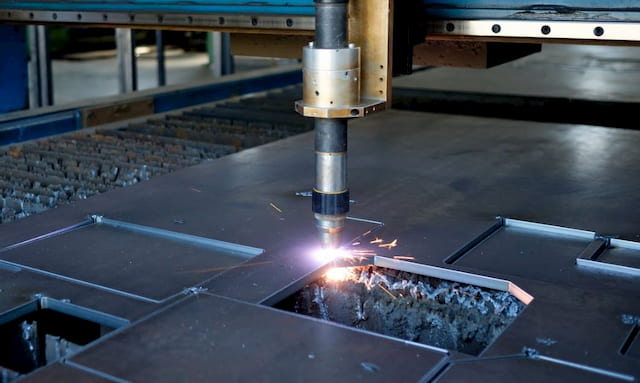
1.1 Introduction to CNC Plasma Cutting
CNC plasma cutting is a revolutionary technology used for precision metal fabrication. It involves the use of a computer-controlled plasma cutter to create intricate and accurate cuts in various types of metal, such as steel, aluminum, and stainless steel. By harnessing the power of plasma, a state of matter consisting of ionized gas, CNC plasma cutting provides exceptional cutting capabilities with minimal heat-affected zones and precise control over the cutting process.
1.2 How CNC Plasma Cutting Works
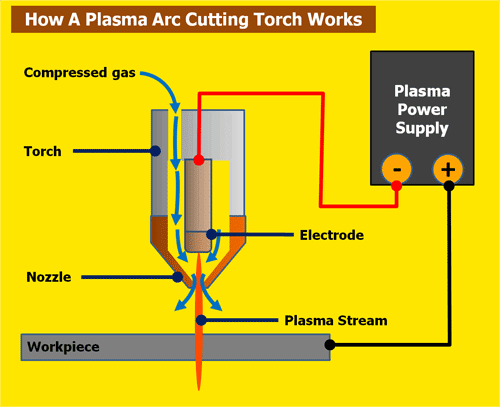
At the core of CNC plasma cutting is the plasma cutter, a machine that generates an electric arc and forces a high-velocity jet of ionized gas, or plasma, through a small nozzle. The plasma jet reaches temperatures of up to 30,000 degrees Fahrenheit, effectively melting and severing the metal being cut. The CNC (Computer Numerical Control) system guides the plasma cutter's movements, ensuring precise positioning and controlled motion along the cutting path.
The CNC plasma cutting process begins with the creation of a digital design or pattern of the desired cut using specialized CAD (Computer-Aided Design) software. This design is then transferred to the CNC system, which converts it into a set of instructions for the plasma cutter. The plasma cutter's torch, mounted on a gantry or robotic arm, follows the programmed path while simultaneously emitting the plasma jet, resulting in the precise cutting of the metal according to the design specifications.
1.3 Advantages of CNC Plasma Cutting
CNC plasma cutting offers numerous advantages that make it a preferred choice for many metal fabricators and manufacturers:
1.3.1 Precision: CNC plasma cutting delivers exceptional precision and accuracy, allowing for intricate and complex cuts with tight tolerances. This precision ensures high-quality finished products that meet exact specifications.
1.3.2 Versatility: CNC plasma cutting can be used on various metals, including steel, aluminum, stainless steel, brass, and copper. It can handle different thicknesses of materials, making it suitable for a wide range of applications.
1.3.3 Speed and Efficiency: The high cutting speeds of plasma cutters enable efficient production processes, reducing overall project timelines. This speed, combined with the CNC automation, enhances productivity and minimizes material waste.
1.3.4 Cost-Effectiveness: CNC plasma cutting is a cost-effective solution for metal fabrication. The efficiency of the process, coupled with the ability to work with a wide range of materials, helps reduce production costs and maximize the value for money.
1.3.5 Minimal Heat-Affected Zone: Plasma cutting generates less heat compared to traditional cutting methods like oxyfuel cutting, resulting in minimal heat-affected zones and reduced distortion in the cut metal. This feature is especially beneficial when working with heat-sensitive materials or thin-gauge metals.
1.3.6 Customization and Complexity: CNC plasma cutting enables the creation of intricate designs, complex shapes, and customized parts. It empowers artists, fabricators, and manufacturers to bring their creative visions to life with precision and efficiency.
By harnessing the power of CNC plasma cutting, you can unlock a world of possibilities in metal fabrication, whether you're a beginner exploring DIY projects or a professional seeking high-quality precision cuts. In the following chapters, we will delve deeper into the process, techniques, applications, and the reasons why PlasmaCut.ie is your go-to provider for CNC plasma cutting services in Newcastle, Dublin, and nationwide in Ireland.
Chapter 2: Getting Started with CNC Plasma Cutting
2.1 Selecting the Right Plasma Cutting Machine
Choosing the right plasma cutting machine is crucial for achieving optimal results in your CNC plasma cutting projects. Consider the following factors when selecting a machine:2.1.1 Power and Cutting Capacity: Different plasma cutting machines have varying power levels and cutting capacities. Assess your specific needs based on the thickness and type of metal you plan to cut. Ensure that the machine you choose can handle the required cutting thickness and is suitable for the materials you'll be working with.
2.1.2 CNC Compatibility: Verify that the plasma cutting machine is compatible with CNC systems. CNC compatibility allows for precise control and automation of the cutting process, ensuring accurate and repeatable cuts.
2.1.3 Torch Height Control (THC): Look for a machine with a torch height control feature. THC automatically adjusts the height of the plasma torch during cutting, maintaining consistent standoff distance from the workpiece. This feature helps compensate for uneven surfaces and enhances cutting quality.
2.1.4 Software and Interface: Consider the software provided with the machine and evaluate its user-friendliness. A well-designed software interface will make it easier to import or create cutting patterns, adjust cutting parameters, and control the machine's operation.
2.1.5 Reliability and Support: Research the reputation and reliability of the manufacturer or brand. Read customer reviews and seek recommendations from experienced users. Additionally, inquire about the availability of technical support and after-sales services to ensure smooth operation and assistance if any issues arise.
2.2 Essential Tools and Safety Equipment
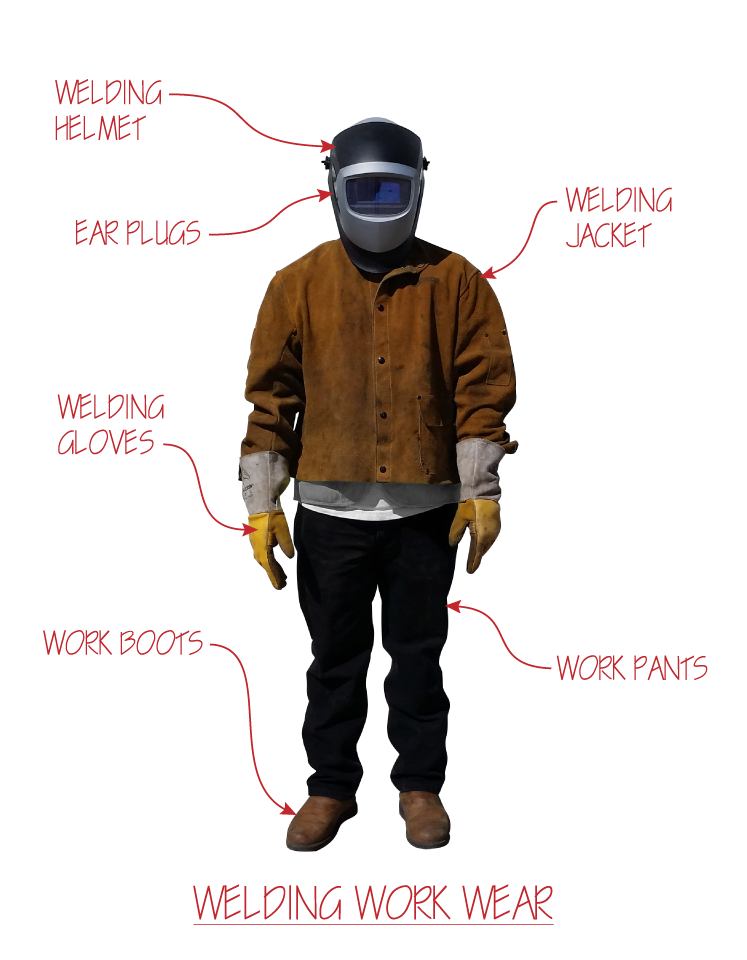 To ensure a safe and productive CNC plasma cutting environment, you'll need the following tools and safety equipment:
To ensure a safe and productive CNC plasma cutting environment, you'll need the following tools and safety equipment:
2.2.1 Personal Protective Equipment (PPE): Wear appropriate PPE, including safety glasses, gloves, a welding helmet or face shield, and flame-resistant clothing. PPE protects you from sparks, metal chips, UV radiation, and potential arc flashes.
2.2.2 Ventilation and Exhaust System: Plasma cutting generates fumes, smoke, and dust. Implement a ventilation system or work in a well-ventilated area to remove airborne contaminants. Consider using an exhaust system or fume extractor to maintain a clean and safe workspace.
2.2.3 Fire Safety Measures: Keep a fire extinguisher nearby and have a fire safety plan in place. Ensure that your work area is free from flammable materials, and never leave the plasma cutter unattended while it's powered on.
2.2.4 Cutting Table: Use a dedicated cutting table or surface that can withstand the heat and sparks generated during plasma cutting. The table should be made of a non-flammable material, such as steel, and feature a slatted design to allow for efficient air flow and debris removal.
2.3 Material Selection and Preparation
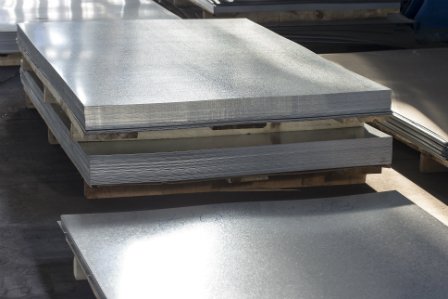
Before starting a CNC plasma cutting project, proper material selection and preparation are essential:
2.3.1 Material Compatibility: Identify the type of metal you intend to cut and ensure that your plasma cutter is suitable for that material. Different plasma cutting systems have specific requirements for various metals.
2.3.2 Material Thickness and Condition: Consider the thickness of the material you'll be working with and confirm that your plasma cutter has the capacity to handle it. Additionally, ensure that the material is clean and free from rust, oil, or any other contaminants that may affect the cutting quality.
2.3.3 Secure Material Fixturing: Properly secure the workpiece to prevent movement during cutting. This can be achieved using clamps, magnets, or specialized fixtures. Secure fixturing ensures accurate and consistent cuts.
2.3.4 Marking and Layout: Mark the cutting pattern or design on the material using a permanent marker or layout tools. This helps guide the plasma cutter along the desired cutting path and ensures precise results.
By considering these aspects of CNC plasma cutting, you'll be equipped with the necessary knowledge and tools to embark on your projects with confidence. In the next chapter, we will delve into the techniques involved in CNC plasma cutting, including designing or importing cutting patterns, setting up the plasma cutter, and executing the cutting process with precision.
Chapter 3: CNC Plasma Cutting Techniques
3.1 Designing or Importing Your Cutting Patterns
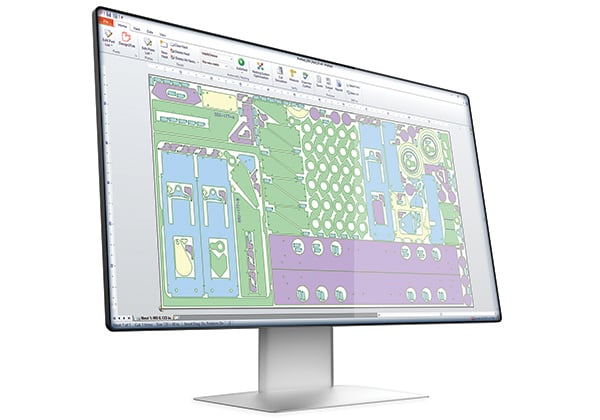 Before initiating the CNC plasma cutting process, you need to create or obtain cutting patterns that define the desired shape or design. Here are some approaches for designing or importing cutting patterns:
Before initiating the CNC plasma cutting process, you need to create or obtain cutting patterns that define the desired shape or design. Here are some approaches for designing or importing cutting patterns:
3.1.1 Computer-Aided Design (CAD) Software: Utilize CAD software to create intricate and precise cutting patterns. CAD software provides powerful tools and features that enable you to design, modify, and optimize your patterns. You can draw shapes, import existing designs, or use parametric modeling to create customizable patterns.
3.1.2 Pre-Designed Templates: Many CAD software programs offer pre-designed templates for common shapes and objects. These templates can be a great starting point and save time when creating cutting patterns.
3.1.3 File Import: If you have existing designs or patterns in digital formats, such as DXF or DWG files, you can import them directly into your CNC plasma cutting software. This allows you to use ready-made designs or work with files created by other software or designers.
3.2 Setting Up the Plasma Cutter
Proper setup of the plasma cutter is vital to ensure accurate and efficient cutting. Here are some steps involved in setting up the plasma cutter:3.2.1 Power and Gas Connections: Ensure that the plasma cutter is properly connected to a reliable power source. Additionally, connect the appropriate gas supply, typically compressed air or nitrogen, to the plasma cutter according to the manufacturer's guidelines.
3.2.2 Torch Assembly: Install the plasma cutting torch onto the machine, following the manufacturer's instructions. Ensure that the torch is securely attached and properly aligned for optimal cutting performance.
3.2.3 Torch Height Adjustment: Set the torch height to the correct distance from the workpiece. This distance, known as the standoff distance, is critical for achieving accurate cuts. If your plasma cutter has a torch height control feature, adjust the settings accordingly for automated height control during cutting.
3.3 Adjusting Cutting Parameters
 To achieve the desired cutting results, you need to adjust various cutting parameters. These parameters determine factors such as cutting speed, amperage, and gas flow. Consider the following parameters when setting up your CNC plasma cutting:
To achieve the desired cutting results, you need to adjust various cutting parameters. These parameters determine factors such as cutting speed, amperage, and gas flow. Consider the following parameters when setting up your CNC plasma cutting:
3.3.1 Cutting Speed: The cutting speed determines how fast the plasma cutter moves along the cutting path. Adjust the cutting speed based on the material type, thickness, and desired cutting quality. Higher cutting speeds may be suitable for thinner materials, while slower speeds may be required for thicker metals.
3.3.2 Amperage: The amperage setting controls the intensity of the plasma arc. Adjust the amperage based on the material thickness, ensuring a balance between cutting speed and the ability to achieve clean and precise cuts.
3.3.3 Gas Flow: The gas flow rate affects the quality of the plasma arc and the removal of molten metal during cutting. Proper gas flow helps maintain a stable plasma arc and assists in removing debris, ensuring a cleaner cut. Refer to the manufacturer's recommendations for the specific gas flow requirements of your plasma cutter.
3.3.4 Pierce Delay and Cut Height: When initiating a cut, the plasma cutter typically requires a pierce delay, allowing the arc to establish before the material is pierced. Set an appropriate pierce delay based on the material thickness. Additionally, adjust the cut height, which determines the distance between the torch tip and the workpiece during cutting.
3.4 Executing the Cutting Process
With the setup and parameter adjustments complete, it's time to execute the cutting process. Follow these steps to ensure a successful CNC plasma cutting operation:3.4.1 Load Cutting Pattern: Import the desired cutting pattern into your CNC plasma cutting software. Ensure that the pattern is correctly aligned and positioned on the workpiece.
3.4.2 Test Cut: Before proceeding with the full cutting operation, consider performing a test cut on a scrap piece of the same material. This allows you to verify the cutting parameters, make any necessary adjustments, and evaluate the quality of the cut.
3.4.3 Start Cutting: Once satisfied with the test cut, begin the cutting process by initiating the program or command on the CNC control system. Monitor the cutting progress and ensure that the plasma cutter follows the designated path accurately.
3.4.4 Post-Cutting Operations: After the cutting process is complete, inspect the cut edges for quality and cleanliness. Remove any slag or dross that may have formed during the cutting process using appropriate deburring tools or techniques.
3.5 Finishing and Post-Cutting Operations
Depending on the project requirements, additional finishing and post-cutting operations may be necessary. These can include:3.5.1 Surface Cleaning: Clean the cut edges to remove any residual debris, such as slag or dross. Use wire brushes, sanding tools, or other suitable methods to achieve a smooth and clean surface finish.
3.5.2 Surface Treatment: Apply surface treatments, such as grinding, polishing, or coating, to enhance the appearance and functionality of the cut metal. These treatments can provide corrosion resistance, improved aesthetics, or specific functional properties.
3.5.3 Assembly and Fabrication: If your project involves multiple cut pieces or requires assembly, proceed with the necessary fabrication and assembly steps. Use appropriate joining techniques, such as welding, bolting, or adhesives, to connect the cut metal pieces together.
By understanding and implementing these CNC plasma cutting techniques, you'll be well-prepared to execute precise and efficient cuts. In the next chapter, we will explore the diverse applications of CNC plasma cutting, showcasing its versatility across various industries and sectors.
Chapter 4: Applications of CNC Plasma Cutting
CNC plasma cutting offers a wide range of applications across various industries and sectors. Its versatility, precision, and efficiency make it a preferred choice for many professionals and hobbyists. Let's explore some of the key applications of CNC plasma cutting:4.1 Industrial Applications
CNC plasma cutting plays a crucial role in industrial settings, where precise and efficient metal fabrication is essential. Some common industrial applications include:4.1.1 Manufacturing and Fabrication: CNC plasma cutting is widely used in the manufacturing and fabrication industries for cutting and shaping metal components. It allows for the production of complex parts, frames, brackets, and other structural elements with high precision and repeatability.
4.1.2 Construction and Architecture: In the construction and architecture sectors, CNC plasma cutting is utilized for creating architectural features, decorative elements, and customized metal structures. It enables the fabrication of intricate designs and patterns, enhancing the visual appeal of buildings and structures.
4.1.3 Industrial Machinery: CNC plasma cutting is instrumental in the production of industrial machinery, including equipment frames, machine parts, and components. It facilitates the fabrication of specialized and customized parts that meet stringent requirements.
4.2 Artistic and Decorative Applications
 CNC plasma cutting opens up exciting opportunities for artists, designers, and craftsmen to bring their creative visions to life. Some artistic and decorative applications include:
CNC plasma cutting opens up exciting opportunities for artists, designers, and craftsmen to bring their creative visions to life. Some artistic and decorative applications include:
4.2.1 Metal Art and Sculptures: CNC plasma cutting allows artists to create intricate and detailed metal artworks and sculptures. It enables the cutting of unique shapes, patterns, and textures, giving artists the freedom to express their creativity in metal form.
4.2.2 Signage and Lettering: CNC plasma cutting is widely used for crafting custom signs, logos, and lettering. It offers precise and clean cuts, ensuring clear and visually appealing signage for businesses, events, and artistic installations.
4.2.3 Home Decor and Custom Furniture: CNC plasma cutting enables the fabrication of customized home decor items, such as metal wall art, table bases, and unique furniture pieces. It offers endless design possibilities, allowing individuals to create personalized and one-of-a-kind pieces for their living spaces.
4.3 Automotive and Customization Industry
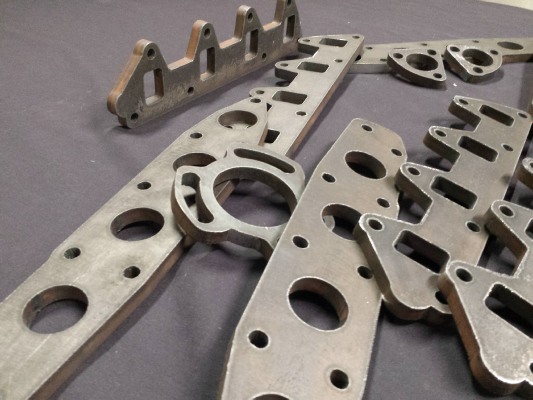 The automotive industry and vehicle customization enthusiasts also benefit from CNC plasma cutting. Some applications include:
The automotive industry and vehicle customization enthusiasts also benefit from CNC plasma cutting. Some applications include:
4.3.1 Automotive Parts and Accessories: CNC plasma cutting is used to fabricate automotive parts and accessories, such as brackets, frames, exhaust components, and specialized body panels. It ensures precise fitment and customization for vehicle upgrades and modifications.
4.3.2 Off-Road and Racing Vehicles: CNC plasma cutting is utilized in the off-road and racing industries to create specialized components, roll cages, and suspension parts. It allows for the fabrication of lightweight yet strong structures for enhanced performance and safety.
4.4 DIY and Hobbyist Projects
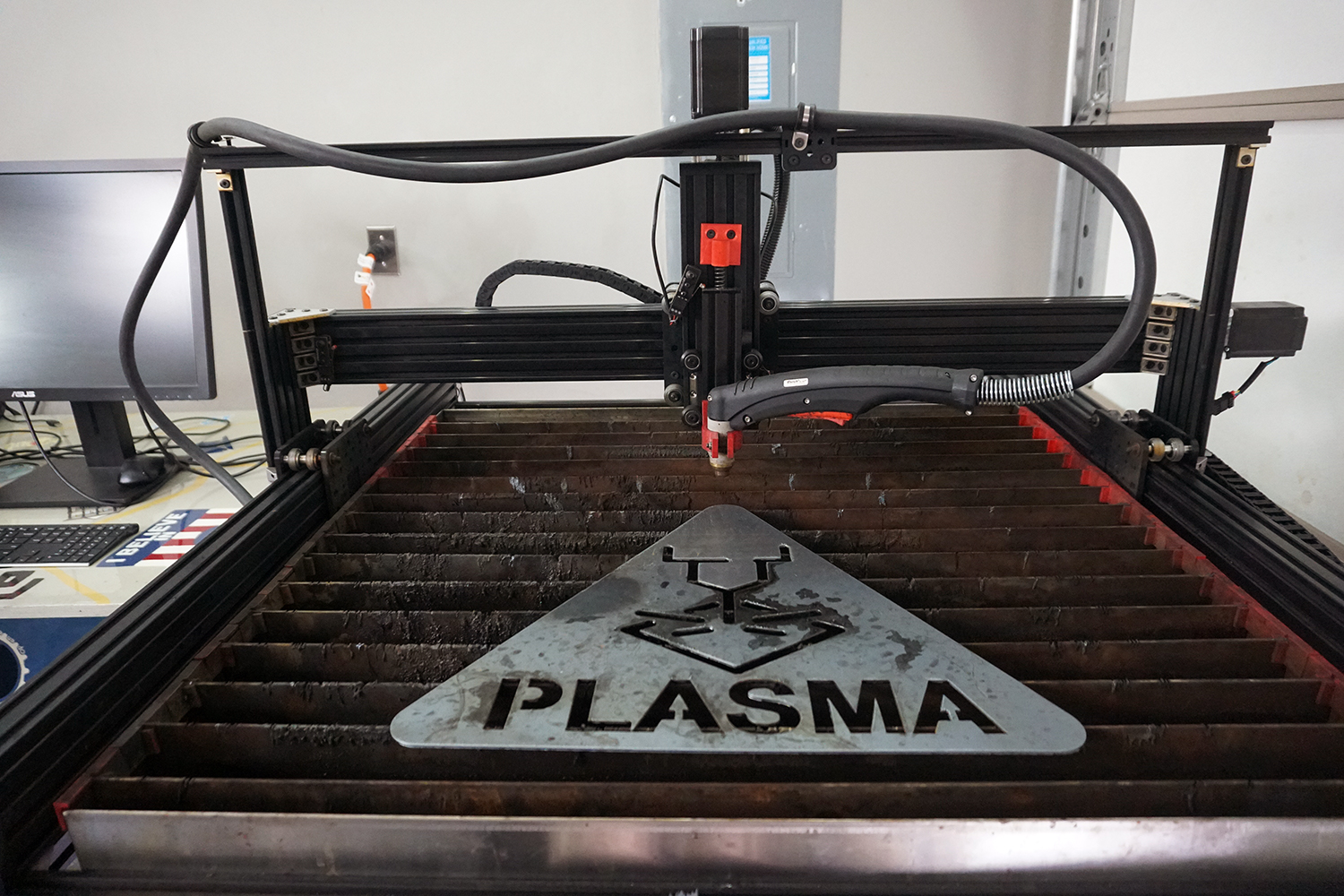 CNC plasma cutting has become increasingly popular among DIY enthusiasts and hobbyists. Some common DIY and hobbyist applications include:
4.4.1 Metal Art and Crafts: CNC plasma cutting provides hobbyists with the ability to create intricate metal art and crafts, such as ornaments, garden sculptures, and personalized gifts. It enables precise cutting of various metal materials, offering endless possibilities for creative projects.
CNC plasma cutting has become increasingly popular among DIY enthusiasts and hobbyists. Some common DIY and hobbyist applications include:
4.4.1 Metal Art and Crafts: CNC plasma cutting provides hobbyists with the ability to create intricate metal art and crafts, such as ornaments, garden sculptures, and personalized gifts. It enables precise cutting of various metal materials, offering endless possibilities for creative projects.
4.4.2 Home Improvement and DIY Projects: CNC plasma cutting is valuable for DIY home improvement projects, such as custom metalwork for gates, fences, railings, and other architectural elements. It allows individuals to add unique and personalized touches to their homes.
4.4.3 Repairs and Restorations: CNC plasma cutting can assist in the repair and restoration of metal objects, such as vintage cars, motorcycles, and antique furniture. It enables the fabrication of missing or damaged parts, ensuring accurate replacements that match the original design.
These are just a few examples of the diverse applications of CNC plasma cutting. Its versatility and precision make it a valuable tool in numerous industries, allowing professionals and enthusiasts to unleash their creativity and achieve exceptional results.
In the next chapter, we will explore why PlasmaCut.ie is your ideal partner for CNC plasma cutting services, catering to your needs in Newcastle, Dublin, and nationwide in Ireland.
Chapter 5: Why Choose PlasmaCut.ie for CNC Plasma Cutting Services
When it comes to CNC plasma cutting services in Newcastle, Dublin, and nationwide in Ireland, PlasmaCut.ie stands out as the premier choice. Here are several reasons why you should choose PlasmaCut.ie for your CNC plasma cutting needs:5.1 High-Quality Precision Cuts
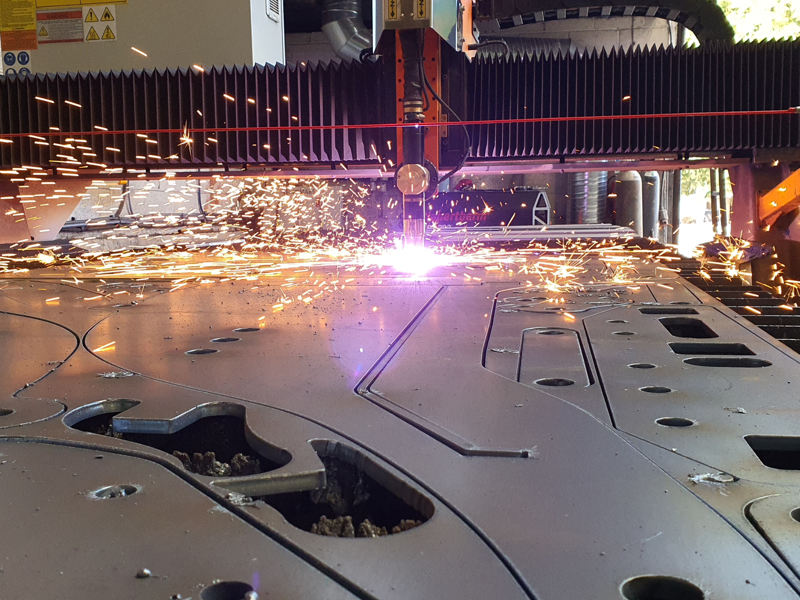 At PlasmaCut.ie, we prioritize delivering high-quality precision cuts that meet your exact specifications. Our state-of-the-art CNC plasma cutting technology, combined with our skilled team of professionals, ensures exceptional accuracy, clean edges, and consistent results. We strive for excellence in every project, whether it's a small-scale customization or a large industrial fabrication.
At PlasmaCut.ie, we prioritize delivering high-quality precision cuts that meet your exact specifications. Our state-of-the-art CNC plasma cutting technology, combined with our skilled team of professionals, ensures exceptional accuracy, clean edges, and consistent results. We strive for excellence in every project, whether it's a small-scale customization or a large industrial fabrication.
